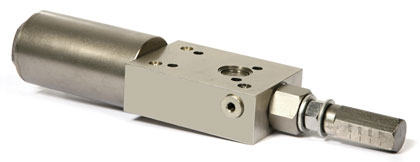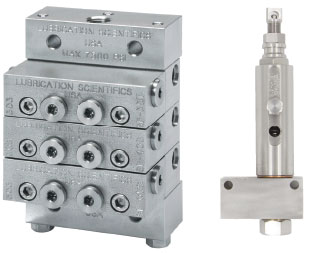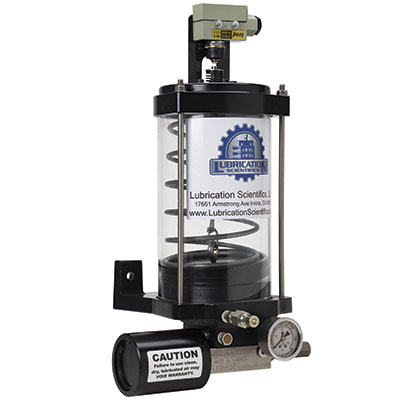Corrosive plant environments are among the most serious threats to the pulp and paper industry, contributing to extensive production downtime and exorbitant maintenance costs. Assets are allowed to operate to failure before repairs are planned. In many instances, bearing maintenance is performed using reactive maintenance—after bearings have incurred serious damage or have already failed.
ADDRESSING NEW DEMANDS
According to the most recent NACE (National Association of Corrosion Engineers) study, the harsh processing environments of facilities in the pulp, paper and allied products sector make corrosion control especially costly and challenging. The direct annual cost is over $6 billion.
Among the most devastating effects of corrosion is its destructive impact on the load bearing surfaces of plant equipment, which are supported by many types of bearing components such as rollers, spines, gears, ball bearings, or other moving parts. Unless these components are provided proper lubrication, they will be subjected to excessive heat and wear, both leading to premature failure.
PREVENTION IS THE NEW MAINTENANCE
With today’s equipment running at higher speeds and longer periods, it is more important than ever to ensure that lubrication systems are providing bearing devices with efficient, timely applications of lubricating oil or grease in order to ensure wear life, safe operation, reduced unscheduled downtime of processing machinery, and more economical operating costs.
More frequent delivery of smaller amounts of lubricant is particularly important to bearing points on high-speed equipment. This prevents overheating the bearings due to excessive lubricant buildup, and ensures longer operating life. For that reason many manufacturers are opting for automating their lubrication systems.
Lubrication Scientifics engineers and manufactures a variety of automated lubrication systems and components that are installed on equipment used in a wide variety of industries including the pulp & paper, chemical processing, steel, petrochemical, food processing, and mining industries.

THE MULTI-POINT CHALLENGE
When paper mills roll emulsion, it can travel through progressive rollers on a machine that is perhaps 200 feet. in length. During that process there is considerable caustic water and glue that is squeezed from the final product and flows all over the machine. When the equipment is washed down with high-pressure hoses, the lubrication oil or grease often gets blown out of the lube points and has to be replaced.
Re-lubricating all of the hundreds or sometimes thousands of points manually is a very difficult and time consuming job that will create substantial, unnecessary downtime for the paper mill resulting in a huge expense that any company would want to avoid.
Although automatic lubrication systems have been around for decades, it is estimated that 80 percent of all lube points are manually lubricated.
SENSE FOR THE BOTTOM LINE
From an economic point of view, automatic lubrication systems provide users with very quick return on investment. In addition to reducing grease consumption up to 33 percent, optimum lubrication reduces energy consumption, maintenance intervals, waste disposal, and unplanned downtime. In some cases, engineered lubrication systems with advanced monitoring capabilities can easily save elaborate processes millions of dollars in operating costs per year.
Automated lubrication systems also eliminate the potential human risk costs associated with manually lubricating critical lube points on running equipment.

AUTOMATED SYSTEM BASICS
There are several different types of automated lubrication systems, but a typical system consists of controller/timer, pump with reservoir, supply line, metering valves, and feed lines.
Whatever the design, automated lubrication system metering valves—the valves that dispense oil or grease in controlled proportions to each connected lube point—must stand up to the rigors of harsh plant environments.
Next month, in the conclusion to this series, we’ll detail three of the most common lubrication systems pump users rely upon: the Single-Line Parallel, which is also referred to as the Injector-type of lubrication delivery methodology; the Dual-Line Parallel, which is also easy to install and features adjustable metering valves; and the Single-Line Progressive System (or the Divider Valve System), which is precisely engineered to deliver exact lubricant requirements to each point. ◆
For More Information:
Richard Hanley is president of Lubrication Scientifics of Irvine, California. Lubrication Scientifics is an ISO 9001:2008 registered American manufacturer of automatic lubrication systems and system components. Its world class CNC manufacturing plant produces a full line of lubrication pumps, distribution valves, injectors, control devices, and system accessories. For more information, call 877.452.0157, email sales@lubricationscientifics.com, or visit www.lubricationscientifics.com.
____________________________________________
MODERN PUMPING TODAY, September 2016
Did you enjoy this article?
Subscribe to the FREE Digital Edition of Modern Pumping Today Magazine!
![]()


